
Almindingen is a large forest area in the centre of Bornholm. Is one of the most popular places on the island. Bornholm’s visitors and inhabitants appreciate the calm and wild nature of this fairytale forest. The forest is located north of the town of Aakirkeby and is one of the largest forest areas in Denmark.
The Almindingen forest is not natural, it was created around 1800. Before reforestation, the area was used as a pasture for islanders' cattle. A natural paradise of 3800 hectares is today not only the fifth largest in Denmark (some sources even say the third largest) but also the most beautiful forest. In the middle of small hills and valleys, you can find hidden forest lakes and peat bogs. Large blocks, steep rocks and picturesque glades occur alternately, especially on the west side. The forest consists of countless well-marked and idyllic hiking trails. You can also go to one of many erected lookout towers and have a look in the forest. A special feature of the tower at Bastemose is the structure adapted for the disabled. So everyone can enjoy this breathtaking flora and fauna.

The Almindingen forest crosses several valleys.
A special attraction is Ekkodalen (Echo Valley), the largest valley on Bornholm, in which you can hear the echo. According to locals, the best echo is heard at the source of Hans Christian Ørsted, which is located at the entrance to Ekkodalen.
Rocks partially overgrown with greenery in the valley, 1 km long, rise steeply on both sides to a height of 20 m. There are several places on the edge of the valley with a wonderful view of the surrounding area.

Fuglsangsrenden is a path leading along the Echo Valley, which was created by the destructive power of water that has eroded rocks since the Ice Age. Created in this way today's natural passage, although stairs have been built in several places to get to the higher places of the valley.
On the rock at the beginning of the path is a monument of the scout Johannes V. Andersen, who died in 1947. A little further is the statue of Hans Rømer, who recreated the Almindingen forest in the years 1800–1836 with the poem carved by Vilhelm Bergsøe:
„Vildtet skabte han hjem and mennesket skygge
Tusinde sangfugle nu i hans højsale bygge
Døde natur, af ham fik du livet tilbage .
Hvo som af død skaber liv, kan døden ej tage.”
Translated text:
"A game he created for home and human’s shadow
Thousands of birds singing now in its high halls
Still life, thanks to him you have regained your life.
He who creates death from life cannot accept death. "

These are two viewpoints located on a high plateau with a view to the south over the Vallensgård and southern Bornholm, from here on the horizon you can see the sea. Dronningestenen is called the "queen's stone".

Rytterknægten, is the highest point of Bornholm at an altitude of 162 meters above sea level. The tower was built in 1856 in memory of the visit of the Danish King Frederick 7 and Countess Danner. The monument was financed from funds collected from the island's population. The king and countess participated in the inauguration of the observation point, which was called Kongemindet.
Gradually, the forest around Kongemindet began to obstruct the view. In 1899, another viewpoint element made of steel was added. The two connected towers measure a total of 22 meters, which means that standing on the top, we are 184 meters above sea level. On a clear day, you can see a large part of the islands of Bornholm and Ertholmene.
The stone viewpoint was designed by architect Gottlieb Bindesbøll, whose main work is the Thorvaldsens Museum in Copenhagen, and the steel tower was designed by his son - Thorvald Bindesbøll.

Gamleborg in Almindingen is the oldest royal castle on Bornholm and the oldest known stone building on the island. It is located on the edge of the Echo Valley. The castle plateau is surrounded by huge defensive walls, and around 1100 the castle was additionally reinforced with a huge granite stone wall. The oldest finds related to the castle come from the 10th century, i.e. from the times of Gorm Old and Harald Blåtand. The discovery of many different types of buildings suggests that in the 11th and 12th centuries there was a permanent garrison in the castle.
We know from written sources that in 890 Bornholm had its own king and that in the time of Harald Blåtand (940 AD - 986 AD) the island was under Danish rule. In the mid-twelfth century, Gamleborg was abandoned, probably in favour of Lilleborg Castle, located about 700 meters further northwest.

Rømer himself built a stone wall, which formed the basis of his first plant nursery, which was founded in 1803. The white house opposite to the plant nursery was also built by Rømer and was a home for storing seeds and tools. The house was built of granite blocks of Lilleborg Castle.
Hans Rømer was not a popular man on Bornholm when he started work. The peasants were dissatisfied with Rømer's stone walls, which put an end to the universal right of use that had been in use since the Middle Ages. This meant that the peasants could no longer bring horses and cows to the grass in the summer, and in the autumn pigs could not eat acorns and beech.
Over time, however, a forest grew on the island, and in 1893 a "grateful descendants" erected a granite obelisk decorated with a brown portrait of Rømer. The obelisk is in his old plant nursery. The inscription on the obelisk says:
Hans Rømer Skovrider i Almindingen 1800-1836
En taknemmelig Efterslægt rejste dette Minde 1893
Med Dygtighed og stor Udholdenhed forenede han den varmeste
Kjærlighed til den
Virksomhed, han var kaldet til, og skabte derved denne herlige Skov .
Text translation:
Hans Rømer, forest overseer in Almindingen, 1800-1836
Grateful posterity erected this monument in 1893
Thanks to Skill and perfect Stamina, he devoted the Love of Work to which he was called, and thus created this beautiful Forest.

The area between Rømersminde and Christianshøj is called Hallebakken.
This area was part of the only 165 hectares of forest that remained when Hans Rømer assumed the office of a forester in 1800. At that time, the forest consisted of hornbeams and a bushy elm oak forest.
Hallebakken together with Jomfrubjerget and the Christianshøj area is the oldest forest of Almindingen.
Hans Rømer - a forester, built a wooden pavilion, which was later replaced by a stone forest house, which today is part of the Christianshøj inn.
Christianshøj was named in 1824 in memory of the visit of Prince Christian Frederik, later known as Christian 8. On this occasion, a public celebration in the forest was organized. It was a great event because Bornholm had not been visited by the king since 1686.
Apparently, 10,000 people, this is half of the island's population this time, attended the festivities. Many large oaks in Christianshøj are the oldest trees in Almindingen. When one of them was cut down for safety reasons in 2009, the growth rings showed that the tree is over 400 years old.

Jomfrubjerget is one of the highest points of Almindingen and is located in the very centre of Bornholm. This is a popular attraction with a beautiful view of Åremyr, which can be admired from benches and tables placed there while grilling over the fire.
In 1891, when Bornholm became a tourist attraction, a magnificent summer hotel was built on a plateau at the top of the hill, which was destroyed by fire in 1974.
The only remains of the original Almindingen forest are found on Jomfrubjerget, around Christianshøj and on Hallebakken.
Lilleborg is one of the oldest medieval royal castles in Denmark. It was probably built by the Danish king Svend Grathe around 1150.
There is no written mention of Lilleborg from that time, but the findings on the spot indicate that the castle was a military facility, administrative centre and residence for the royal bailiff and his family and servants. A relatively large number of keys and parts of the locks indicate that the castle had many valuables that were locked in boxes or secured behind the castle gates.
When the castle was built on top of a 16-meter escarpment, it was surrounded by water. It was built as an annular fortress, which means that a circular courtyard surrounded various buildings for living and working. Outside the round wall was the so-called courtyard; breeding farm housing farm animals as well as agricultural tools and products.
Lilleborg was destroyed and set on fire in 1259 by Archbishop Lund.

Rokkestenen is a large erratic boulder that was left by ice about 10,000 years ago.
Legend has it that it rests on a diamond, that's why it's rocking. Around Rokkestenen there is a Kohullet with crystal clear water and Puggekullekær - "pond on the troll hill".

This is a forest botany garden that contains a collection of over 100 species of trees. The arboretum was founded in the 1930s by Valdemar Sejer - a forester.
His idea was to create a collection of trees and shrubs growing on the 55th latitude, that is the latitude of Bornholm. After Sejer has finished his work, the Arboretet was allowed to fall into ruin. However, in the 80s the garden was renovated and expanded to include trees mainly from North America and Asia.
North American trees were planted in the northern part of the garden. Asian, especially Japanese and Korean, were planted in the southern part.

On 17 th and 18 th October 1967, a strong storm hit Bornholm. It reached the strength of a hurricane and caused great damage. Over 20,000 trees, over 90,000 cubic meters of wood, have fallen over at Almindingen. Most of the wood was removed from the forest.
However, as part of the experiment, beeches were blown down by the wind in this small 3½-hectare area of Almindingen, and although they have been lying since, most of them are still alive. They formed new trunks, and the horizontal trees look like boats with masts. The trunks of many live, fallen trees look like long, narrow canoes.

Røsegravfelt consists of two main stone grave mounds and about 60 smaller ones, as well as several menhirs. Stone mounds come from the late Bronze Age and the Early Iron Age (700-200 BC).
Other stone mounds are simply stone collections from fields that arose when ancient farmers cleared the land and prepared it for cultivation. In Denmark, these stone mounds are especially found on Bornholm, and Røsegravfelt is the best preserved from all of them.
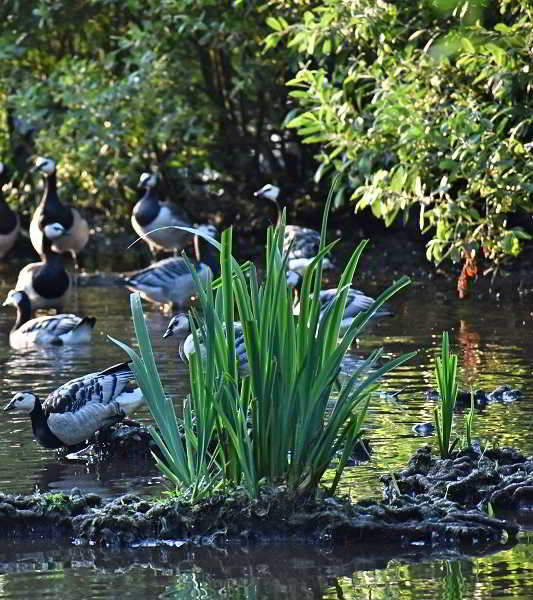
The Udkæret bird sanctuary is located south of Almindingen and is one of the best bird sanctuaries on Bornholm. During periods of migration in spring and autumn Udkæret is a place of rest and feeding for many waters and wading birds. In winter it is a good place to observe birds of prey.
Udkæret is an old wetland that was once drained and reclaimed for agriculture. However, about a thousand years ago, the drains were stopped by Bornholmians and water flooded the area again. On warm May evenings, Udkæret croaks with the croak of hundreds of frogs, in April and September at dusk a large number of bats can be seen.
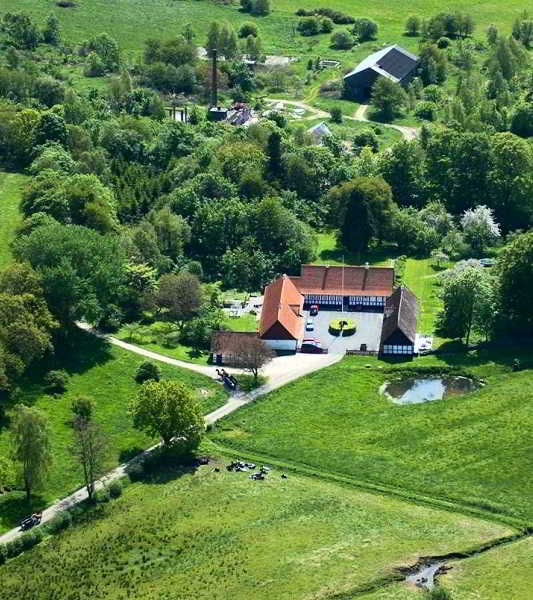
Rømersdal is the name of the 200-year residence of the forester Hans Rømer, which he had build in 1803.
Today, Rømersdal is the building of the forest inspectorate on the island, as well as the headquarters of the Bornholm administration of the Danish Nature Agency.

Christianshøj Trinbræt is located at the intersection where Almindingsvej meets Segenvej and is a souvenir from the time when the railway was operating on Bornholm.
Skovtursbanen, as it was first called, was opened between Åkirkeby and Ekkodalen in 1901, a year after the first Bornholm railway line between Rønne and Nexø was opened. In the summer, Skovtursbanen operated five daily connections. In 1916, the railway was extended to the final station in Gudhjem, and since then the train has been running all year.
The railway line was decommissioned in 1952, and in 1968 the Rønne-Nexø line was decommissioned. Christianshøj Trinbræt stayed in place and today has a small exhibition on rail services and Almindingen.
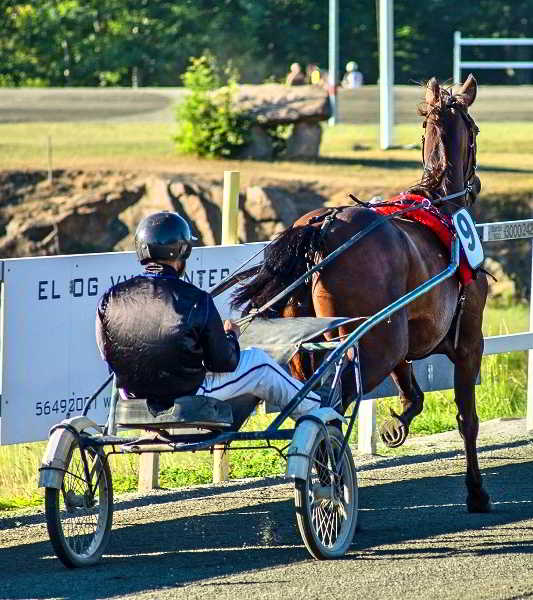
Hareløkkerne is the name of plots that once belonged to a forester named Hare. In 1960 a race track was built here. The first race was attended by over 10,000 guests, and horse races are still popular on Bornholm. The races take place from April to October. Opposite the race track, there is a fenced dog playground in Almindingen and a children's playground.
The playground in Hareløkkerne is intended for small and older children. Toddlers can play in the "pen" chipped and equipped with a mud kitchen. A balance track and climbing wall "Lindormen" were created for slightly older children. There is also a music zone, open lawns, swings and two bonfire places. Behind the playground is Musestien, a path with carved wooden figures, suitable for children from 3 years of age and can be accompanied by an adult.
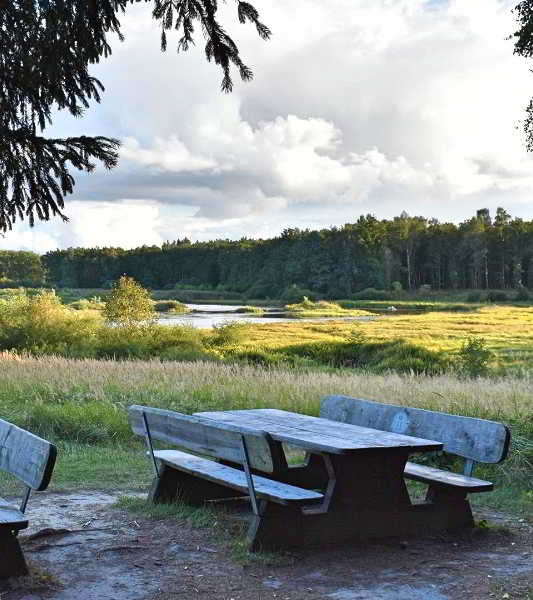
Bastemose is the largest peat bog in Almindingen. It is also one of the richest areas, in terms of birds, plants and insects. Bastemose nature can be admired from the observation tower and the bridge over the peat bog.
From the watchtower, you can see many species of birds, including cranes, harriers, grey geese and mallards. With any luck, we can also see ospreys and sea eagles, which regularly visit the peat bog. On the bridge, you can get closer to the flora and fauna of the lake. Swans and their grey cygnets often feed close to him, and red-legged falcons hunt dragonflies in the air at the turn of May and June.
Access to the watchtower and bridge is from the parking lot in Segenvej. Bastemose was named after a sip of linden, which in the past was an indispensable household item. For the same reason, the forest area where the peat bog is located is called Lindesbjerg.
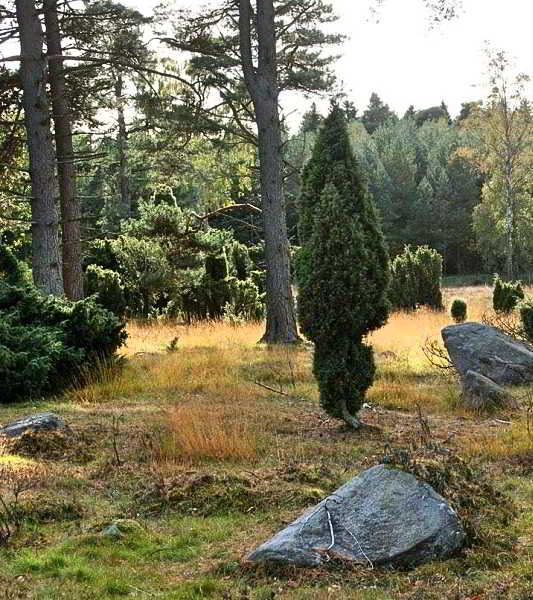
Enebærskoven is a small part of Almindingen that has never been afforested. In other words, the area looks almost the same when the Almindingen forest was heath and every summer it was grazed by farm animals. As the name implies, common juniper predominates in Enebærskoven ("Juniper Forest"); However, you'll also find birches, aspens, Scottish pines and, of course, heather.
Today, sheep are still grazing in Enebærskoven. In this way, the original nature of the landscape was preserved, as an illustration of what the entire moor looked like, and thus Almindingen, from the Middle Ages to the beginning of the 19th century, when the forest was planted.
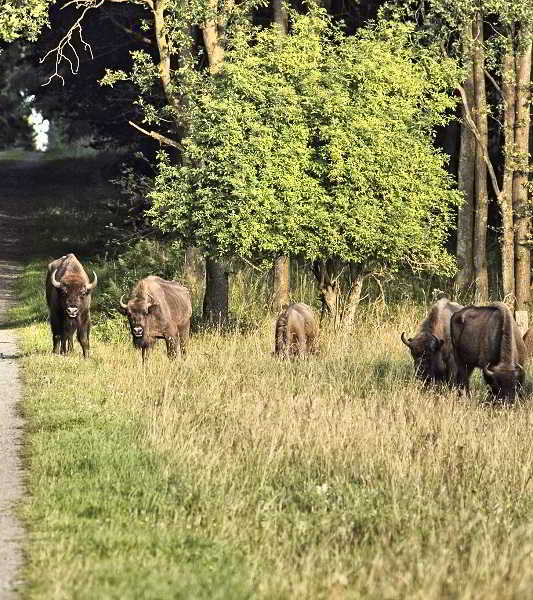
There is a bison farm in Svinemosen. The animals are fenced and roam about 200 hectares.
A herd of bison consisting of six cows and one bull came to Almindingen from Poland in June 2012. A year later the first calf was born and since then the herd has been growing year by year. Bisons only live in a nature reserve, because Bornholm is not a natural home for such large animals, but only for deer, wild boars or beavers that inhabit open forest areas. The impact of large animals on the forest maintains it and contributes to the creation of natural habitats that have virtually disappeared from Danish forests.
Natural habitats where a large number of herbs grow and many insect species live would not survive. Bornholm was chosen as an animal house as part of a bison conservation project. After World War I, this species was virtually eliminated and there was no wild bison in Europe. But 54 of them lived in captivity and thanks to them the population of this species increased to more than 4,000, including those living on Bornholm.
Bison are usually not dangerous, but it is recommended to keep a distance of at least 100 meters to avoid dangerous situations. It should be noted that female bison with newborn calves are much more aggressive than usual. Visitors are asked to stay on paved and paved paths and marked routes. Dogs can be walked out, but of course, they must be kept on a leash. It is possible to visit the bison forest by car because cattle grates are installed at both ends of Chr. X's Vej.
In the bison yard, there is also Svinemosen, which is a nice bird sanctuary, among others with cranes. There is a watchtower here exactly where the road reaches the bog. In 2013, the road was named Prinsgemalens Vej ("The Way of the Prince's Spouse") and two benches were set up overlooking the bog. For the past 40 years, Prince Henrik has visited Bornholm during the spring hunts, and he especially liked the Svinemosen reserve.
How to get
By bike: bike tour Rønne - Gudhjem lub Rønne - Årsdale
By bus: from Rønne, bus lines 4, 9